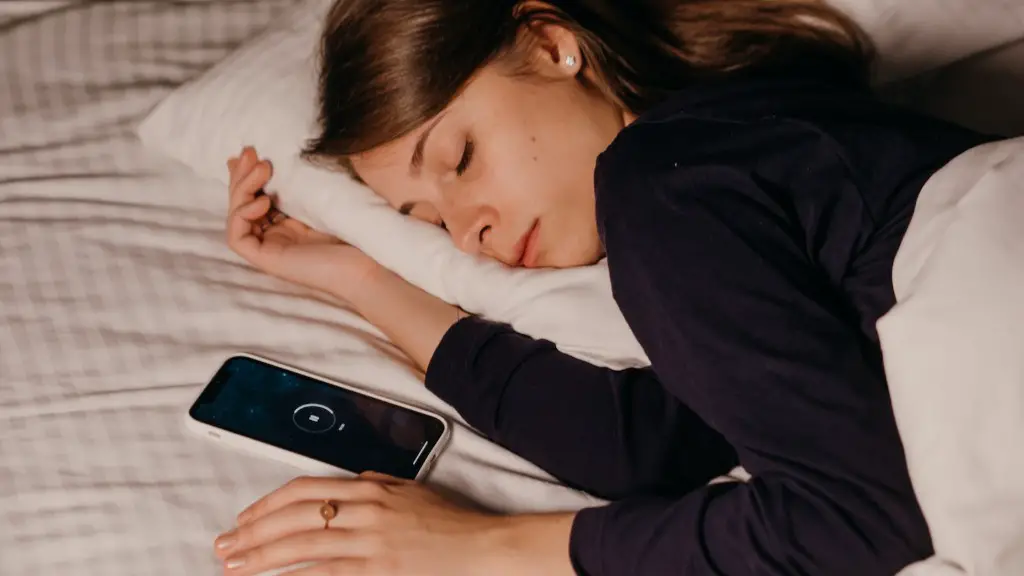Fever dreams are often described as being very vivid and surreal. They can be frightening or confusing, but they can also be incredibly beautiful. Many people report feeling like they are in another world entirely when they have a fever dream.
Fever dreams can be very vivid and realistic, or they can be more like abstract hallucinations. They can be upsetting or confusing, and sometimes people feel like they are being watched or followed in them.
What are examples of fever dreams?
Fever dreams are a type of dream that can be caused by a fever. They are usually more vivid and intense than normal dreams, and can be frightening or disturbing. Examples of fever dreams include feeling suffocated, walls caving in and crushing you, Kafkaesque creatures, etc. You might even wake up asking for help, certain that someone wants to harm you or kill you.
Fever dreams are often described as emotionally intense, troubling, strange, or scary. They may also include less social interaction scenarios than normal dreams. A small 2013 study found that 11 percent of participants reported fever dreams.
Is a fever dream good or bad
Fever dreams are more likely to be negative and emotionally intense than regular dreams, according to a new study.
The study, which is the first to systematically investigate the content of fever dreams, found that roughly 94% of people who have experienced them describe them as negative.
Fever dreams are also much more vivid and realistic than regular dreams, and often involve themes of fear, danger, and anxiety.
The findings suggest that fever dreams may be a way for the brain to process and release negative emotions.
If you experience fever dreams, it may be helpful to talk to a therapist or counselor to help you process the emotions they evoke.
Fever dreams can occur when your body temperature is above 101°F. In most cases, they won’t last for long, but everyone is different. If you find your dreams are lingering for longer than they should and causing you discomfort, consider seeing a doctor.
Why do fevers spike at night?
Cortisol is a hormone that is produced by the adrenal gland. It is closely linked to your immune system function. Cortisol is higher during the day, and these higher levels suppress your immune activity to a large degree. When cortisol levels go down at night, your immune system is more active in fighting illness or infection. This is why fevers spike at night.
Fever dreams are most likely to occur when your body temperature is above 1004 degrees Fahrenheit. However, they can also occur when your body temperature is only slightly elevated, such as when you have a fever. Fever dreams tend to be more vivid and intense than regular dreams, and they often involve strange or frightening subjects. If you’re experiencing fever dreams, it’s important to stay hydrated and rest as much as possible. If your fever is severe, you should see a doctor.
Why are my dreams suddenly so vivid?
There are a number of different things that can trigger intense dreams. Problems with friends, family, school, or work can all cause stress that can lead to vivid dreams. Big events like getting married or buying a house can also be stressful and lead to intense dreams. And finally, traumatic events such as the death of a loved one, sexual abuse, or a car accident can also cause vivid dreams.
If you have a fever, it is important to dress lightly. Wearing too many clothes or blankets can make it harder to reduce your body temperature. If you are feeling cold, try wearing a single layer of clothing and using one lightweight blanket. If your temperature is over 103 degrees Fahrenheit, you should let your doctor know.
What are the stages of a fever
Fever can be generally characterized into three different phases. The first phase is when your body reacts and starts to heat up. Your blood and lymphatic system work to make white blood cells, which help to fight infection. The fever then levels off in the second phase. In this second phase, the amount of heat you make and lose is equal. Finally, the fever breaks and you begin to cool down.
Acetaminophen (Tylenol) and nonsteroidal anti-inflammatory drugs (NSAIDs), such as ibuprofen (Advil, Motrin), are effective for treating pain and fever associated with most types of viral infections. Your doctor will treat any underlying infection if necessary.
Can you resume a dream?
It’s possible to resume a dream if you wake up in the middle of it and concentrate on going back to sleep. However, it’s not always easy to do. Dreams can be so realistic that it can be hard to tell if you’re awake or asleep, which can make it difficult to focus on going back to sleep.
Falling is a very common dream for people and usually happens when we feel like we are losing control in our lives. Dreams about falling can be interpreted in many ways, but usually they represent a fear or anxiety that we are feeling in our lives. If you are constantly having dreams about falling, it might be a good idea to talk to a therapist or counselor to help you figure out what is causing this fear or anxiety in your life.
What illness causes vivid dreams
People with narcolepsy often say that they have vivid dreams that can be bizarre or disturbing. This is because narcolepsy blurs the line between sleep and wakefulness. When you are narcoleptic, you may find yourself falling asleep unexpectedly during the day. This can lead to some interesting and disturbing dreams.
A person with a fever should not bundle up in a blanket as it may raise their body temperature and make the fever worse. They also should not starve themselves as this will leave them with no energy to fight off the infection. Antibiotics should not be taken unless prescribed by a doctor as they may not work and can have harmful side effects. Self-medication is also not recommended as it may not be necessary and could make the situation worse.
Is it OK to sleep under fan during fever?
If you have a fever, there are a few things you can do to try and bring it down. One is to dress in layers of lightweight clothing. Another is to sleep with a lightweight blanket. The room you’re in should also be comfortable, not too hot or too cool. If it’s hot or stuffy, a fan can help.
If you have a fever, it’s important to drink plenty of fluids to stay hydrated. You can also take a lukewarm bath or shower, and use damp cloths on your forehead, neck, feet, and hands to help cool yourself down. Dress lightly in cool, comfortable clothing, and use a fan to help keep yourself cool. You can also take ibuprofen or acetaminophen to help reduce your fever. Finally, increasing the indoor humidity and placing a cold compress on your head can also help to break a fever.
What is the final stage of fever
The ascent stage is the final stage of a rocket’s journey, when it slows down and prepares to land. This can be a very uncomfortable process, with chills, head and muscle pains, and malaise all common symptoms. However, it is also the most exciting part of the journey, so hang in there!
If you have a fever greater than 99.9F or chills, you may have COVID-19. These symptoms may appear 2-14 days after exposure to the virus. If you have any of these symptoms, call your doctor or seek medical attention.
Final Words
What are fever dreams like?
Fever dreams can be very vivid and strange. They may feel real, but they are not. They can be about anything, including things that are worrying you or that you are afraid of.
Fever dreams are usually strange and intense. They can be caused by fever, stress, anxiety, or even certain medications. They often feel very real, and can be hard to distinguish from reality. Sometimes they can be scary or disturbing, but usually they’re just bizarre.





